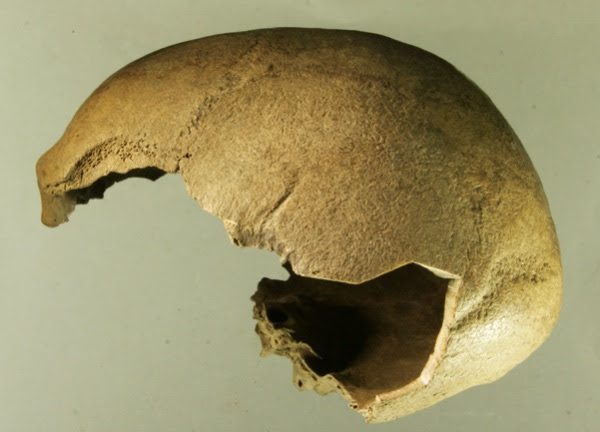It is known that northeastern Siberia has been inhabited by humans for over 40 years. The archaeological records already discovered hinted at the complexity of the history of human occupation in this region – one of the most remote and extreme environments to be occupied by humans – but the scarcity of these records did not yet allow us to draw conclusions about the dynamics of these populations.
The results of the study now published in Nature magazine – the first to analyze and compare 34 ancient genomes from human remains found in different places in Siberia, from 31 000 years ago to the present – reveal that the history of human occupation of the region involved at least three migrations and subsequent large replacements. scale.
“Our initial hypothesis was that Siberia's current populations descended from humans known to have lived about 30 years ago in Siberia. But the genomes we've analyzed along the timeline from that remote past until today show great differences between them – and contradict that hypothesis. For example, samples about 30 years old are more similar to individuals currently living in western Europe than to individuals from current populations of Siberia”, explains Vítor Sousa, one of the authors of this article and a researcher at the Center for Ecology, Evolution and Environmental Change – cE3c, at the Faculty of Sciences of the University of Lisbon.
Among the ancient genomes analyzed are the genomes extracted from two baby teeth, which correspond to the oldest human remains found to date in the region, with approximately 31 years. They were found at a large archaeological site in Siberia, near the Yana River. The place, known as Yana Rhinoceros Horn Site – Yana RHS – was found in 2001 and contains more than 2500 animal bone and ivory artefacts, along with stone tools and evidence of human habitation.
This study also reveals that one of the analyzed genomes, corresponding to the remains of a 10-year-old man, found near the Kolyma River, in Siberia, are genetically related to American Indians. It was already known that humans first reached the Americas from Siberia to Alaska, via a land bridge that crossed the Bering Strait, submerged at the end of the last Ice Age.
But this is the first time such close genetic links have been discovered outside of the United States of America, and it represents a key to understanding the genetics of Native American ancestors.
“Our estimates show that 31 years ago Siberia was occupied by an ancestral population that was distributed over a large area, represented by genomes obtained from the two baby teeth found near the Yana River. This population later disappeared – it was almost completely replaced by a population more similar to the Asians, who colonized Siberia between 15 and 29 thousand years ago, represented by the skull sample from the Kolyma River, which is about 10 thousand years old. This population is very important because it is the most similar to all Native Americans today. However, in Siberia, this population was also replaced in a third migratory wave by populations from Southeast Asia, between 10 and 18 thousand years ago, direct ancestors of the current populations. Note that the migratory waves were accompanied by genetic exchanges between populations, for example, the Kolyma sample has between 7% and 22% of Yana”, explains the researcher.
“Understanding the history of human occupation of Siberia is very important to understanding the history of humanity as a whole. On the one hand, because it is a region with an extreme and inhospitable climate – which helps us to understand how climate change over the last thousands of years has affected human populations. On the other hand, since it is a region that was linked to America by a land passage through the current Bering Strait, it is crucial to understand the human colonization of the Americas. Our results show that the analysis of ancient DNA can resolve many questions about the relationship between current populations, and show that populations that became extinct may have left an important genetic legacy”, explains Vítor Sousa, one of the researchers who worked on the genetic analysis of this international study, coordinated by Eske Willerslev, researcher at the University of Copenhagen (Denmark) and the University of Cambridge (United Kingdom).
Along with genetic analysis, researchers have also developed climate models to understand how the region's climate has evolved over the past thousands of years. Although it is not possible to say with certainty which factors determined the disappearance of these populations and subsequent replacement by other populations during migratory waves, the results of climate modeling suggest that periods of marked cooling and inhospitable climate during the last glaciations may be related to the its disappearance.
The various migrations that have taken place in northeastern Siberia over the last 30 years reveal that these various populations have generated the genetic diversity of contemporary humans who inhabit a vast area of Eurasia and the Americas, representing a significant part of human history. “This finding changes a lot of what we thought we knew about the population history of northeast Siberia, but also what we know about the history of human migration as a whole,” says Martin Sikora, researcher at the Lundbeck Foundation Center for GeoGenetics (Denmark) and co-author of the study.
Article reference:
Sikora M. et al. (2019) The population history of northeastern Siberia since the Pleistocene. nature.
Author Communication Office of the Center for Ecology, Evolution and Environmental Change – CE3c, Faculty of Sciences, University of Lisbon
Science in the Regional Press – Ciência Viva



















Comments